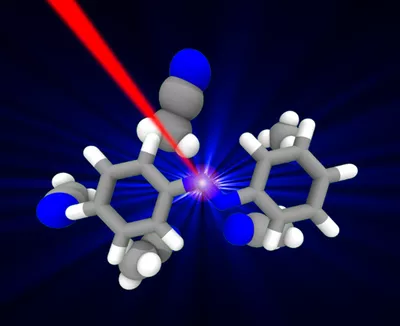Everyone knows the red-light laser pointer. However, the "green light" version is often preferred because it is brighter. The light is ejected by a traditional infrared laser process which is passed through a crystal that transforms it into green light. This is known as the 2nd harmonic generation phenomenon. This property is the source of the development of new spectroscopies, new modes of transmission and data processing, including so-called intelligent molecules, used on a molecular scale or as sensors. One example is medical fluorescence imaging, where the analysis of the contrast of image elements can be improved by this type of process.

By using mixed numerical simulation methods, combining classical mechanics and quantum mechanics, the international team of researchers was able to demonstrate the role of the movements of molecules (their structural fluctuations) on their properties. This aspect of dynamics is innovative because previous studies were limited to 'rigid' structures. These phenomena have been analysed in different situations where the molecular environment plays a role that can be preponderant. Organic molecules in different forms were used: in solution, as small aggregates, in lipid bilayers, as self-assembled monolayers and also polymers. These compounds were used because they can be easily modulated by synthesis, which allows their properties to be optimised or maximised.
The results of this research will lead to improved interpretation of spectra, signals and experimental observations in a range of cases, as well as to the design of new molecules with improved non-linear optical properties.
The research team
- Frédéric Castet | University of Bordeaux, CNRS, France
- Claire Tonnelé | Donostia International Physics Center (DIPC), Spain
- Luca Muccioli | University of Bologna, Italy
- Benoît Champagne | NISM Institute, University of Namur, Belgium
Express CV
Benoît Champagne is Professor at the Department of Chemistry of the University of Namur and member of the Namur Institute of Structured Matter (NISM). His areas of expertise are theoretical chemistry, electronic structure and properties of molecules and polymers, vibrational and electronic spectroscopies and nonlinear optics.